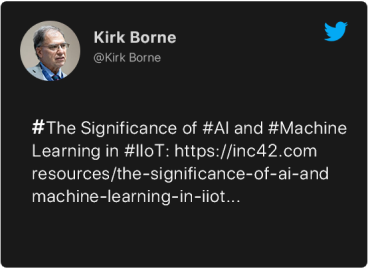Only 3% of India’s rural population has paid a bill or bought something online
In 2018, only 21.46% of rural India had internet access in contrast to 81.32% of the urban population
The broadband penetration in the rural region was only 11.78% of the total population
In the interim Union Budget presented on February 1, interim finance minister Piyush Goyal said,
“The consumption of mobile data in India has increased more than 50X over the span of five years and the cost of data and voice calls in India is possibly the lowest in the world.”
In the attempt to self-aggrandise his government for its Digital India efforts, the minister seems to have overlooked some serious loopholes in our digital economy, prime among them the glaring disparity in internet access between urban and rural India.
Consider these stats: Only 21.4% of the rural population of India has internet subscriptions as compared to 81.32% of the urban population. The numbers are similar when it comes to the utility of the internet as well. According to the World Bank, as of 2017, only 3% of India’s rural population was regularly active on the internet. As of 2018, the total internet subscribers in urban and rural regions are 365 Mn and 194 Mn respectively.
The internet, undoubtedly, is the most important innovation of our time after electricity. The importance of the internet for a country’s prosperity is reflected from the findings of a study conducted by World Bank in 2009, which stated that “for each 10% increase in broadband penetration, there was a 1.38% increase in gross domestic product (GDP), for both developing and developed countries.”
The importance of the internet in fuelling the growth of an economy can’t be underlined enough. Given Goyal’s claims in the Interim Budget, we, at Inc42 DataLabs, decided to decode the urban-rural divide in internet access. In this article, we also assess the impact of the internet in the upliftment of marginalised sections of society and the sustainability and utility of the internet among the Indian masses. Apart from this, we will look at the factors that are hindering the exponential growth of the Indian economy despite the digital push by the government.
How Egalitarian Is Internet Access In India?
Internet penetration in the urban region is not an accurate marker of the digital progress of India as the utility of the internet — application of the internet for daily life and trade activities — is very different between urban and rural populations.
As pointed out above, 81.32% of the total population has access to the internet, which translates into approximately 365 Mn of the 450 Mn urban inhabitants of India. In contrast, the figures in rural India are quite the reverse. A mere 21.46% rural inhabitants — or 194 Mn of 904 Mn people — had access to the internet as of 2018. These figures are taken from the Telecom Regulatory Authority of India (TRAI) data sources.
A similar trend is visible in the graph below, where we compare the disparity on a more effective parameter — ‘Internet subscribers per 100 people in the rural and urban region’.
If we look at the 2018 internet access data from the above graph, the inequality of access to the internet is clearly evident. In the 2014-2018 period, although the CAGR of internet subscribers (per 100 population) in the rural region — 15.34% — was marginally higher than that of the urban region — 14.25% — the utility of internet in rural India is an altogether different story.
Rural Vs Urban: Utility Of The Internet
So, a little under a quarter of the rural population has access to the internet, but does it mean that it uses the net regularly? To measure the impact of internet penetration in the society, one has to look at how frequently do the people of that society use the internet.
In the graph below, we have compared the growth of internet utility in BRICS nation in terms of the percentage of the population above 15 years of age in rural regions who have used the internet to pay bills or buy something in the past year. The data is as per the World Bank.
As evident from the graph above, China has witnessed a surge of 31% in the utility of the internet among its rural population in an interval of 4 years while in the case of India, the surge has been minimal — from 1% in 2014 to 3% in 2017. This reflects an important determinant of internet access — the readiness of India’s rural populace to use tech products seems to be much lower than other developing nations.
Another reason for this low internet utility in rural India could be the low broadband coverage in India. As per a TRAI report from March 2018, broadband penetration in rural areas was only 11.78% of the total population while in urban India, it was around 68% of the total population.
Internet Usage ≠ Internet Access
In light of the facts presented by Inc42 DataLabs in this article, we can conclude that patting ourselves on the back for the rise in overall usage of data in the country is not an effective way of measuring our progress as nation aspiring to become a digital economy. Rather, we should work on making access to the internet as well as technology much more egalitarian than it is today.
While preparing an upcoming report by Inc42 DataLabs on the fintech ecosystem of India, we came across an interesting fact which shows that the positive correlation coefficient between the GDP per capita of selected Indian states and internet subscribers per 100 people of the population has plunged by 65.97% in 2018 from 2017. This could be because of the following reasons:
The immense urban-rural internet divide has made it harder for the rural population to cope with fast-paced technological advancement, which eventually creates a disparity in the overall impact of the internet on the social development of the population.
Lack of effort from the government in educating people on the utility of technology. As per a report published by LIRNE Asia, around 64% of the surveyed people in India said that the reason for not using the internet was that they didn’t know what it was.
To overcome this knowledge scarcity among the people, the common service centres established by the government should provide basic internet services to residents of rural areas. They should also focus on training people to perform online activities such as bill payment, etc, to do away with the fear of technology and make them familiar with it. This will eventually increase the utility of the internet in rural areas, bringing it at par with that of urban areas.
Only if this urban-rural gap is filled by providing egalitarian internet access will technology have a real, positive impact on the economy as a whole and the Digital India movement take off in earnest.




 Fintech
Fintech Travel Tech
Travel Tech Electric Vehicle
Electric Vehicle Health Tech
Health Tech Edtech
Edtech IT
IT Logistics
Logistics Retail
Retail Ecommerce
Ecommerce Startup Ecosystem
Startup Ecosystem Enterprise Tech
Enterprise Tech Clean Tech
Clean Tech Consumer Internet
Consumer Internet Agritech
Agritech
































